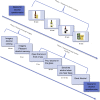The Moderating Role of Sex in the Relation between Cue-Induced Craving and Resting-State Functional Connectivity in the Salience Network of Non-Clinically Diagnosed Drinkers
- PMID: 37423204
- PMCID: PMC10614227
- DOI: 10.1159/000531090
The Moderating Role of Sex in the Relation between Cue-Induced Craving and Resting-State Functional Connectivity in the Salience Network of Non-Clinically Diagnosed Drinkers
Abstract
Introduction: Previous research indicates a relation between craving and increased connectivity in the resting-state salience network. However, the link between cue-induced craving and connectivity in the salience network remains unclear. Further investigation is needed to understand the effect of sex on the relationship between cue-induced craving and the salience network. We investigated the role of sex in the association between the resting-state functional connectivity (RSFC) salience network and subjective cue-induced craving.
Methods: Twenty-six males (mean age = 25.3) and 23 females (mean age = 26.0), with a score of 12 or higher on the alcohol use disorder identification test, were included in the current study. No significant difference in age was observed between males and females. Participants underwent a resting-state MRI scan for 6 min. Following the MRI scan, participants completed an alcohol cue-exposure task for 5.5 min to assess cue-induced craving using the desire to drink alcohol questionnaire. We applied independent component analysis methods to determine functional connectivity within the salience network. Subsequently, we investigated how cue-induced craving is related to the salience network's RSFC and if this relationship is moderated by sex.
Results: The association between the salience network and cue-induced craving was not statistically significant nor did we find a moderating effect for sex.
Conclusion: The null findings in the study may be explained by a lack of power. Alternatively, alcohol use sex disparities may be more prevalent in the recreational/impulsive stage, whereas participants in our study were in the later stage of addiction.
Keywords: Craving; Heavy drinkers; Resting-state functional connectivity; Salience network; Sex differences.
© 2023 The Author(s). Published by S. Karger AG, Basel.
Conflict of interest statement
The authors declare no personal or financial conflicts of interest related to the results of this research.
Figures



References
-
- Schick MR, Nalven T, Lynch-Gadaleta B, Hostetler KL, Crawford MC, Spillane NS. Inclusion and reporting of sex, gender, and race/ethnicity in randomized controlled trials of nonpharmacological treatments for alcohol use disorder: a meta-epidemiologic review. Alcohol Clin Exp Res. 2022 Jul;46(7):1154–65. 10.1111/acer.14850. - DOI - PubMed
MeSH terms
Substances
LinkOut - more resources
Full Text Sources

